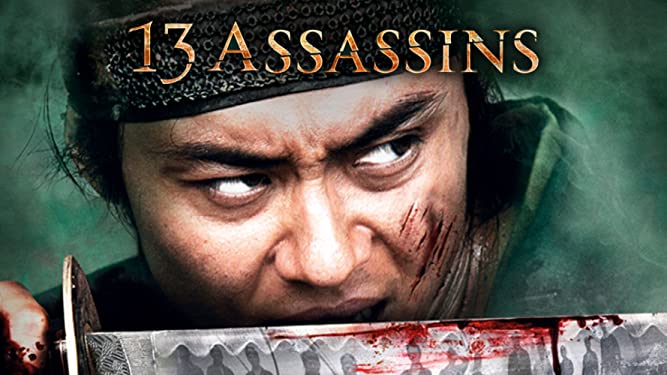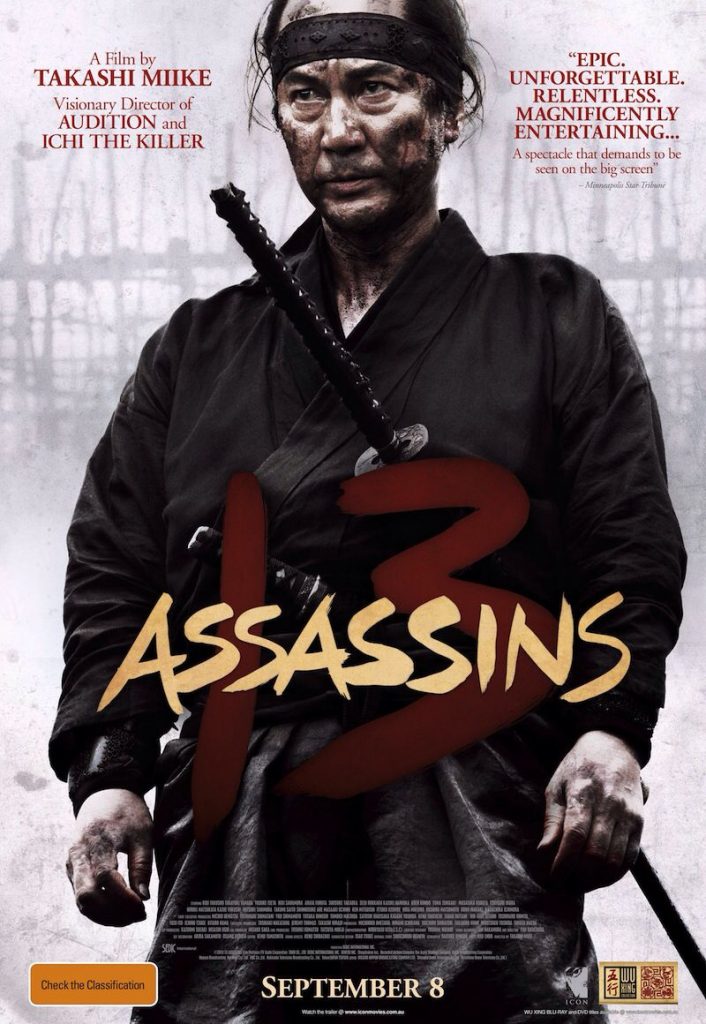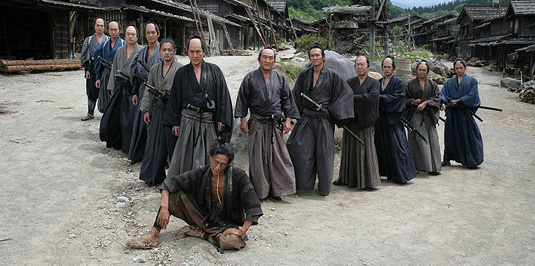
'As feudal Japan enjoys peace, the samurai era is waning. But this fragile calm is threatened by the growing power of Lord Naritsugu, the Shogun's sadistic younger brother. Sir Doi realizes Naritsugu will ruin the Shogunate after he rises in political power. As Naritsugu`s evil deeds are quickly hushed up, Sir Doi must act'
Over the last week since finishing our look back at Blade of the Immortal (BOTI). Paul and I have watched and studied 13 assassins for the first time since i t was released. For this reason we have discussed 13 Assassins and broken it down more than any other film we have done to date. I think most surprising for us was to find that the film is now 11 years old. In hindsight we both think that we should have watched this one first, before BOTI. Upon doing research for this, we discovered that the Japanese cut is 141 minutes, while the international cut of the film runs at 126 minutes. Possessing this knowledge Paul and I feel that we really need to see this complete version to get more from the film, and to see more development with the assassins. Basically the film geeks in us came right to the surface and now we must see this full version of this already amazing samurai film.

Again as like BOTI the film is steeped with tradition. It grabs your attention from the off, with the opening above prologue, Shinzaemon is given the task of assassinating the lord and putting his assassins together for this objective. This is our first act, and the film takes it's time to develop each character and him picking his team and to why. Given this a group of samurai, all living by the same code, this could've been bland, but there is character development for each assassin, each is given his own traits. As we said, we feel we should have watched this first, as this film, acts like a blue print, for BOTI. Both films have the same cinematography Nobuyasu Kita, plus the same film editor Kenji Yamashita. It seems like they have used the same techniques from this film to BOTI but have evolved it more, with the use of the camera work to the slick editing. Everything feels a smoother, as they have perfected the film techniques to what we see in BOTI. <Now, we have gone off in a tangent, which Paul and I often do, while we are talking about films>.

It is a very traditional way of building the story up to the finale. Using a three act structure, it is well defined but at the same time flows seamlessly into each other. Yes, it has been done before, with the likes of Seven Samurai, The Dirty Dozen and the list could go on. The man given a righteous mission against impossible odds is as timeless as this film is traditional. What sets 13 Assassins apart from the rest, is the amazing final. At a running time of fifty minutes, the finale of the film, the third act, takes up more than a third of the film. What also sets this film apart is it's epic battle finale as you follow each characters journey during the battle, each assassin you're with them on their journey, you're emotionally connected to them as they fight their way through Naritsugu's men to carry out their mission to get to the Lord and serve justice for his sadistic crimes. Paul and my favourite character is – Kujuro Hirayama played by Tsuyoshi Ihara. We like the fact that hes cool, calm and collective, he has the most standout scenes of the film. So, it is only fitting, that we close out our 13 Assassins revisit, with a quote from Hirayama.
'No Mercy! There is no samurai code or fair play in battle! No sword? Use a stick. No Stick? Use a rock. No rock? Use your fists and feet! Lose your life, but make the enemy pay!'